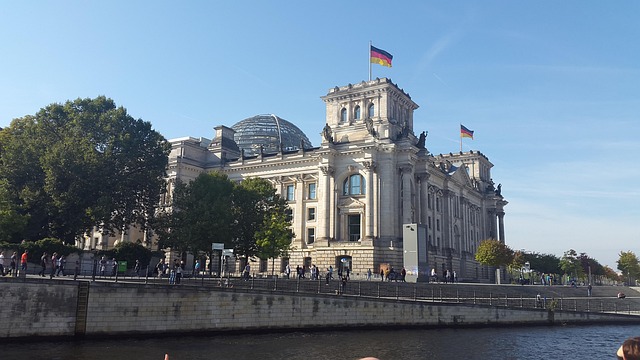
Unpacking the Myths Surrounding Energy Subsidies
Energy subsidies are a hotly debated topic within the realms of economics, environmental policy, and social justice. They encompass a wide range of measures employed by governments to support energy production and consumption. However, despite their significant impact on global energy markets and climate change initiatives, there are many myths surrounding energy subsidies that obscure the real effects and efficacy of these policies. This article aims to unpack these myths, providing a comprehensive understanding of energy subsidies and their associated consequences.
Understanding Energy Subsidies
Energy subsidies can take various forms, including direct financial assistance to energy producers, tax breaks, and price controls. They are usually instituted with the intent of making energy more affordable for consumers, encouraging domestic production, supporting renewable energy technologies, or achieving specific social or environmental goals. However, the outcomes are complex and multifaceted, leading to misconceptions and oversimplifications.
Myth 1: Energy Subsidies Are a Uniform Solution
One of the most pervasive myths is the belief that all energy subsidies are alike and yield similar outcomes. In reality, the consequences of subsidies can vary widely based on the type of energy being subsidized—be it fossil fuels, nuclear energy, or renewables. For instance, subsidies for fossil fuels may lower energy prices in the short term, but they can have detrimental long-term effects on climate change, energy dependence, and air quality.
Conversely, subsidies directed towards renewable energy technologies are aimed at fostering innovation and reducing greenhouse gas emissions. While both types of subsidies involve financial support, their objectives and impacts on the environment and society differ dramatically.
Myth 2: Energy Subsidies Help Poorer Households
Another common misconception is that energy subsidies predominantly benefit low-income households by keeping energy prices affordable. While it’s true that subsidies can provide immediate relief to households struggling with energy costs, the distribution of benefits is often skewed. Many subsidies, particularly those for fossil fuels, can disproportionately favor wealthier households who consume more energy.
Research shows that wealthier households are more likely to own larger homes and more appliances, thereby consuming more energy and reaping a larger share of the benefits from fossil fuel subsidies. This trend not only exacerbates inequality but also raises questions about the effectiveness of subsidies as a mechanism for social support. Instead of blanket subsidies, targeted assistance for low-income households may yield better outcomes in addressing their energy needs more equitably.
Myth 3: Subsidies Are Necessary for Energy Affordability
Many proponents of energy subsidies argue that they are essential for maintaining affordable energy prices. However, this argument fails to consider the complexities of market dynamics and the actual effects of subsidies. By artificially lowering energy prices through subsidies, governments can unintentionally encourage overconsumption, leading to wasteful practices and inefficiencies.
Furthermore, subsidies can distort market signals, discouraging investments in energy efficiency and renewable technologies. Instead of perpetuating affordability through subsidies, a transition towards market-driven solutions can lead to more sustainable pricing mechanisms, encouraging consumers to be more mindful of their energy consumption while still keeping energy affordable.
Myth 4: Subsidies Are a Temporary Measure
Many people view energy subsidies as short-term measures, implemented to stabilize markets during crises or to spur initial growth in fledgling industries. In reality, once instituted, subsidies often become entrenched in policy frameworks, resistant to change. For example, fossil fuel subsidies have persisted for decades, despite global commitments to reduce carbon emissions and transition towards greener energy systems.
Even as the renewable energy sector matures, vested interests may lobby for continued subsidies, only perpetuating dependency on public funding. This raises critical questions about the long-term sustainability of subsidies and the necessity for a shift in policy focus towards greater market efficiency and self-sufficiency.
Myth 5: Eliminating Subsidies Will Lead to Higher Energy Prices
A frequently cited argument against the elimination of energy subsidies is the fear that it will lead to skyrocketing energy prices. While it is true that removing subsidies can result in short-term price volatility, a careful phasing out of subsidies combined with strategic investments in energy infrastructure and efficiency can minimize adverse effects.
Moreover, history has shown that artificially low energy prices can lead to resource misallocation, strangle innovation, and slow down the transition to more sustainable energy systems. A more gradual, thoughtful approach to subsidy removal may help stabilize prices while fostering competition and driving technological advancements.
Myth 6: Subsidies Are Only a Problem in Developing Nations
While energy subsidies do present significant challenges in developing countries, they are not exclusively a problem of the Global South. Developed nations also grapple with substantial energy subsidy issues, particularly in the fossil fuel sector. According to various reports, wealthy countries collectively spend billions annually on fossil fuel subsidies, exacerbating not only climate problems but also public health and social inequalities.
Additionally, developing countries often face unique challenges, such as the need for energy access, that complicate the subsidy landscape. Viewed through a global lens, it becomes evident that the issue of energy subsidies is a shared concern that requires collaborative approaches to reform.
Myth 7: All Subsidies Are Malicious or Corrupt
Underlying the debate about energy subsidies is the notion that they are inherently driven by corrupt motives or bad policy choices. While it is true that some subsidies may arise from political favoritism or misallocation of resources, it is simplistic to paint all subsidies with a broad brush of malice.
In many cases, subsidies result from well-intentioned goals—such as promoting energy independence, enhancing energy security, or aiding economic development. The challenge lies in devising transparency and accountability measures to ensure that subsidies are actually targeted towards their intended objectives, rather than perpetuating inefficiencies or benefiting specific interest groups disproportionately.
The Path Forward: Evaluating and Reforming Energy Subsidies
The myths surrounding energy subsidies are numerous and multifaceted, creating significant barriers to effective policy reform. As the world grapples with the dual challenges of energy needs and climate change, a nuanced understanding of subsidies is essential for informed decision-making.
To navigate the complex landscape of energy subsidies, a concerted effort is required to improve transparency and accountability in subsidy programs. This involves robust data collection and analysis to assess the true impact of subsidies and guide future interventions.
Engaging stakeholders, including energy producers, consumers, and community groups, can foster a dialogue around necessary reforms and contribute to developing more effective policies. Collaboration across sectors can lead to innovative solutions that not only address energy affordability but also prioritize sustainability and equity.
Conclusion
Energy subsidies have long served as a tool for governments to achieve a variety of economic and social objectives. However, persistent myths surrounding these subsidies can perpetuate inefficiencies and hinder necessary reforms. By unpacking these misconceptions, we gain a better understanding of the role of subsidies in the energy landscape and pave the way for more effective policy measures that support both economic growth and environmental sustainability.
As we look to the future, a balanced approach that considers the unique dynamics of different energy sources, the social context of energy consumption, and the urgent need to combat climate change will be essential for shaping a resilient and equitable energy system.


